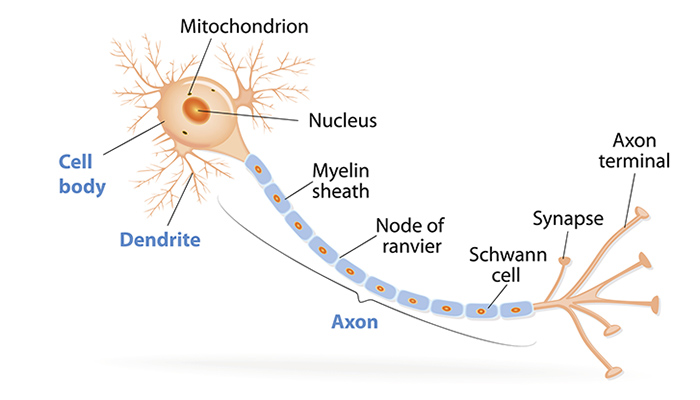CMT1 types have commonly been referred to as “demyelinating” and CMT2 as “axonal,” which gives the impression the nature of the nerve damage between the two is fundamentally different. (CMTX is a bit different.)
In fact, CMT1 types appear to involve demyelination and axonal damage, according to a rat model and the following study:
Krajewski KM, Lewis RA, Fuerst DR, Turansky C, Hinderer SR, Garbern J, Kamholz J, Shy ME. Neurological dysfunction and axonal degeneration in Charcot-Marie-Tooth disease type 1A. Brain. 2000 Jul; 123 (Pt 7):1516-27. DOI: 10.1093/brain/123.7.1516. PMID: 10869062.
Demyelination also impacts CMT2 types over time.
The study cited above by Krajewski et al. suggests that commonly used Nerve Conduction Velocity (NCV) testing is not terribly useful for diagnosis and can’t assess disease progression. (It does help narrow down the type of neuropathy one ha and what types of nerves are affected.)
Further, it appears that current electrodiagnostics don’t work to assess meaningful axonal damage that impacts movement, sensation, and quality of life. This is the conclusion of Lawson et al. in Assessment of axonal loss in Charcot-Marie-Tooth neuropathies. Exp Neurol. 2003 Dec; 184(2):753-7. DOI: 10.1016/S0014-4886(03)00293-0. PMID: 14769367.
The conventional diagnostic for CMT based on motor nerve velocities also has an “intermediate CMT” where velocities are slower than normal but not as slow as is common with CMT1. Berciano J. et al. suggest this “intermediate CMT” is a type of CMT2 in Intermediate Charcot-Marie-Tooth disease: an electrophysiological reappraisal and systematic review. J Neurol. 2017 Aug; 264(8):1655-1677. DOI: 10.1007/s00415-017-8474-3. EPUB 2017 Mar 31. PMID: 28364294.
We need better diagnostics but also a revised understanding of CMT types and what is / is not CMT. There is some progress on this front, fortunately! (High-density surface electromyography rather than NCV.) More on this later…



Leave a Reply